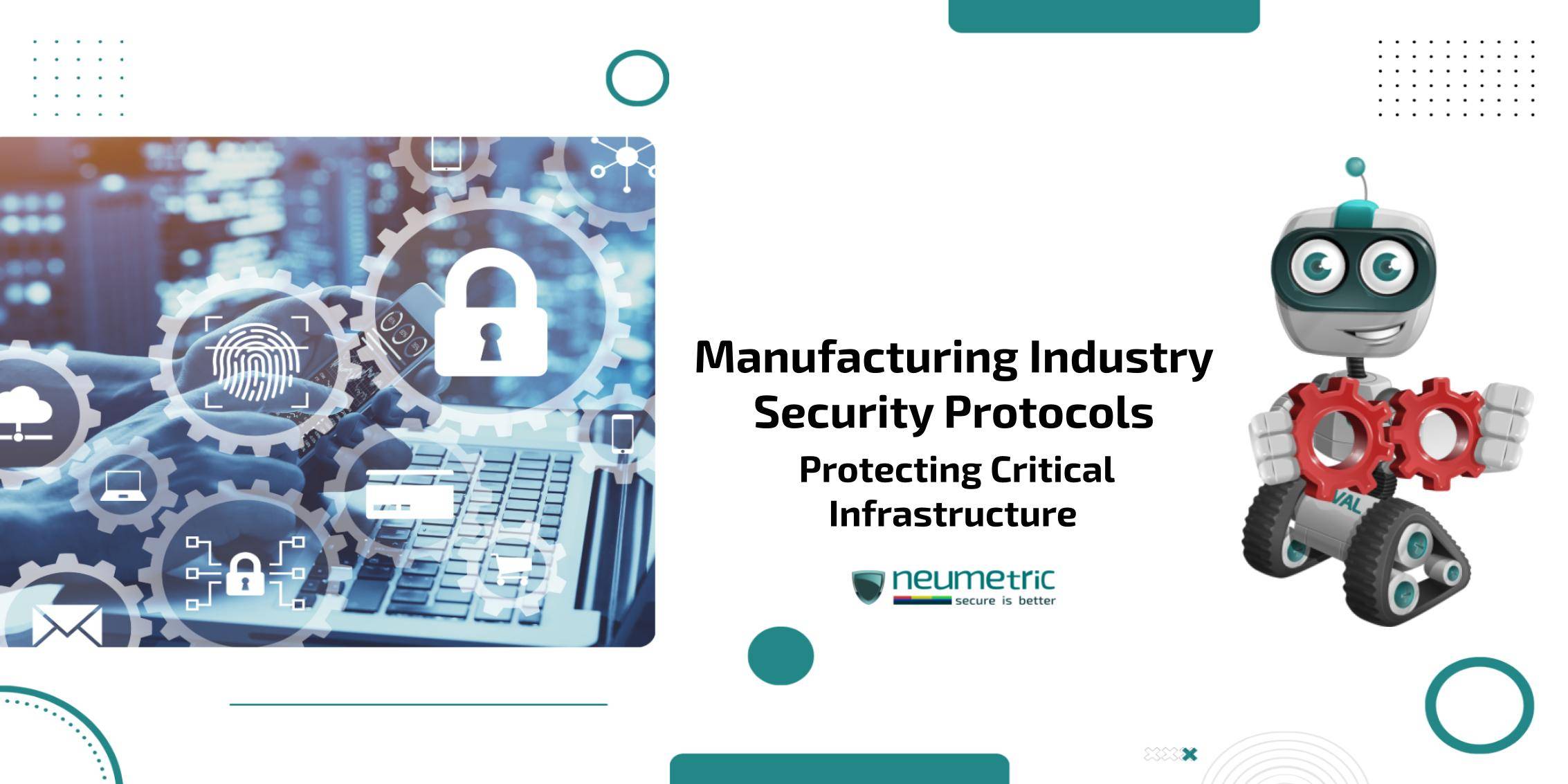Table of Contents
ToggleIntroduction
The manufacturing sector stands as the backbone of global economies, contributing significantly to employment, innovation & economic growth. However, this crucial industry is increasingly vulnerable to security threats. Security within manufacturing is not solely about protecting company assets; it involves safeguarding critical infrastructure that supports essential services, including energy, transportation & defence. A breach in this sector can lead to severe disruptions, economic losses & even pose risks to public safety.
Critical infrastructure in manufacturing faces multifaceted vulnerabilities, ranging from cyber threats to physical breaches. With the integration of digital technologies & interconnected systems, the exposure to cyber risks has surged. Simultaneously, physical security concerns persist, with the potential for sabotage, theft or tampering. Understanding these vulnerabilities is pivotal in devising comprehensive security protocols to shield the industry’s core infrastructure.
Understanding Manufacturing Industry Security
The Evolution of Security Protocols in Manufacturing
The landscape of security protocols in manufacturing has evolved significantly. Historically, security measures primarily focused on physical barriers & manual surveillance. However, with the advent of digitisation & Industry 4.0, there has been a paradigm shift. Today, security protocols encompass a blend of cyber & physical measures to combat modern threats.
Key Threats to Manufacturing Infrastructure
- The proliferation of connected devices & automation has expanded the attack surface for cyber threats. Ransomware attacks, data breaches & intellectual property theft are among the prevalent cyber risks faced by the manufacturing sector.
- Despite technological advancements, physical security threats such as unauthorised access, theft & sabotage persist. Securing manufacturing facilities, warehouses & supply chains from these threats is imperative.
Impact of Breaches on Manufacturing Operations
Security breaches in manufacturing operations can result in production downtimes, financial losses, damage to reputation & compromise of sensitive data. The impact extends beyond the immediate financial implications, affecting consumer trust & market competitiveness.
Critical Components of Security Protocols
Cybersecurity Measures
- Network Security: Network Security involves implementing robust Firewalls, Intrusion Detection Systems [IDS] & conducting regular security audits. This multi-layered approach fortifies against cyber threats attempting to breach the network. By establishing barriers & actively monitoring traffic, it safeguards sensitive systems & data from unauthorised access & malicious activities.
- Endpoint Protection: Endpoint Protection ensures security across all endpoints, including devices, machines & IoT sensors. Through encryption, access controls & regular updates, it shields these endpoints from potential vulnerabilities, securing them against cyber threats & unauthorised access, thus maintaining the integrity & confidentiality of the network.
- Data Encryption Techniques: Data Encryption Techniques involve employing sophisticated encryption methods to safeguard sensitive data at every stage of its lifecycle. This includes encryption during transmission & storage, ensuring that even if intercepted, the data remains unreadable & protected from unauthorised access or tampering.
Physical Security Measures
- Access Control Systems: Access Control Systems are deployed using biometrics, key cards or smart locks to regulate & monitor entry into manufacturing facilities. These mechanisms not only restrict unauthorised access but also provide an audit trail for entry & exit, enhancing overall security.
- Surveillance & Monitoring: Surveillance & Monitoring employs CCTV cameras, sensors & real-time monitoring systems to bolster physical security. This setup enables proactive detection of anomalies or suspicious activities, facilitating swift responses to potential security breaches.
- Security Personnel Training: Security Personnel Training is crucial for ensuring that the security team is equipped to handle threats effectively. Comprehensive training programs empower security personnel to respond efficiently to incidents, follow security protocols & maintain vigilance, contributing significantly to the overall security posture of the manufacturing facility.
Compliance Standards & Regulatory Framework
Within the manufacturing sector, industry-specific standards play a pivotal role in shaping security protocols. Institutions like the National Institute of Standards & Technology [NIST] & the International Organisation for Standardisation [ISO] offer comprehensive guidelines & frameworks. These standards aren’t merely suggestions; they serve as benchmarks, providing a structured approach for implementing robust security measures.
NIST offers a wide array of cybersecurity & risk management standards. For instance, NIST’s Cybersecurity Framework outlines a risk-based approach, emphasising identifying, protecting, detecting, responding to & recovering from cybersecurity threats. Meanwhile, ISO standards, such as ISO 27001 for Information Security Management Systems [ISMS], provide a globally recognised framework for establishing, implementing, maintaining & continually improving information security.
These standards don’t dictate specific security technologies or methods. Instead, they offer a structured approach, allowing organisations to tailor security protocols according to their unique operational needs & risk landscapes. By adhering to these standards, manufacturing entities establish a foundational baseline, ensuring consistency & reliability in their security measures.
Regulatory Requirements & Mandates for the Manufacturing Sector
Governmental bodies recognise the criticality of securing infrastructure within the manufacturing industry. As a result, they institute specific regulations & mandates aimed at safeguarding critical assets & ensuring operational resilience. These regulations often stem from a recognition of potential threats, including cyber-attacks, industrial espionage & physical security breaches.
Regulations can encompass various aspects, including data protection, access controls, incident reporting & disaster recovery planning. For instance, in the United States [US], the Department of Homeland Security [DHS] collaborates with other Federal Agencies & private sector partners to implement security measures & guidelines under the Critical Infrastructure Protection [CIP] program. This program ensures the security & resilience of critical infrastructure, including manufacturing facilities, against a wide range of threats.
Similarly, European countries have directives such as the Directive on Security of Network & Information Systems (NIS Directive), aiming to enhance the overall level of cybersecurity in the European Union by promoting the cooperation between EU countries.
Implementing Effective Security Protocols
- Steps for Assessing Manufacturing Security Needs: Conducting comprehensive risk assessments & audits is paramount. This process identifies vulnerabilities, evaluates the current security status & prioritises areas needing immediate attention. It provides a roadmap for tailoring security measures to the specific risks prevalent in the manufacturing ecosystem.
- Strategies for Developing Comprehensive Security Protocols: Customising security protocols is crucial to address the unique blend of cyber & physical security challenges in manufacturing. Tailored strategies fortify defences, ensuring a holistic approach to protect against diverse threats prevalent in the industry.
- Collaborative Efforts & Partnerships: Nurturing partnerships among industry stakeholders, government bodies & cybersecurity experts fosters a collective approach to address security challenges. Sharing insights & best practices strengthens defences against evolving threats.
The Human Factor: Training & Awareness
- Importance of Employee Training: Continuous training programs are vital, educating employees on security protocols & nurturing a security-focused mindset. Educated staff form a crucial line of defence against potential threats.
- Fostering a Security-Centric Culture: Creating an organisational culture that prioritises security encourages proactive participation & vigilance among employees. It ingrains a sense of responsibility for safeguarding assets & information.
- Addressing Insider Threats: Mitigating risks associated with insider threats involves implementing stringent access controls, continuous monitoring & ongoing awareness campaigns. It aims to prevent internal vulnerabilities & unauthorised access to sensitive information.
Cost-Benefit Analysis of Security Protocols
- Evaluating the Return on Investment [ROI]: Assessing tangible & intangible benefits gained from robust security protocols against associated costs provides insights into the effectiveness of security measures. It quantifies the value derived from the investment in securing manufacturing infrastructure.
- Balancing Cost Considerations with Security Needs: Maintaining operational efficiency while allocating resources for security measures is crucial. Achieving a balance ensures effective security without compromising the manufacturing process, optimising both safety & productivity.
Conclusion
Safeguarding the manufacturing industry’s critical infrastructure demands a holistic approach that integrates robust cybersecurity measures & stringent physical security protocols. From comprehensive risk assessments to tailored strategies, collaborative partnerships & a focus on employee training & awareness, the key lies in addressing evolving threats while balancing operational needs & costs.
Embracing these measures collectively fortifies the industry against present & future challenges, ensuring resilience & continuity in an ever-changing landscape. By prioritising security, the manufacturing sector can confidently navigate the complexities of the digital era, safeguarding its vital infrastructure & contributing to global stability & growth.
FAQ:
How do cybersecurity measures contribute to protecting manufacturing facilities?
Cybersecurity measures play a crucial role in securing manufacturing facilities against digital threats. They involve implementing robust firewalls, encryption methods & network security protocols to safeguard sensitive data & prevent unauthorised access. By fortifying digital systems, cybersecurity measures ensure the integrity & confidentiality of critical information, thereby shielding manufacturing infrastructure from cyber-attacks & potential breaches.
What are the key steps involved in assessing security needs within the manufacturing industry?
Assessing security needs in manufacturing entails comprehensive risk assessments & audits. These steps involve identifying vulnerabilities, evaluating the current security status & prioritising areas that require immediate attention. By conducting these assessments, manufacturing entities gain insights into potential risks & can tailor security measures to address specific threats prevalent in their operational environment.
How crucial is employee training in maintaining security within manufacturing facilities?
Employee training plays a pivotal role in upholding security within manufacturing facilities. Ongoing training programs educate employees about security protocols, cultivating a security-conscious mindset among staff members. This ensures that employees are equipped to identify & respond to potential threats, mitigating risks associated with insider threats & enhancing the overall security posture of the manufacturing facility.





